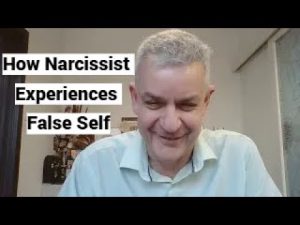- 1.1 1. Announcements and Introduction
- 1.2 2. Characteristics of Parentifying Parents
- 1.3 3. Trauma and Infantilization in Otherwise Healthy Parents
- 1.4 4. Internalization and Introjection in Parentified Children
- 1.5 5. The Internal Family System of Parentified Children
- 1.6 6. Attachment Styles and Emotional Impact on Parentified Children
- 1.7 7. The Reality and Fantasy of Parentified Children
“Parentified Children as Adults and Insecure Attachment” Hyperintrojection
1. Announcements and Introduction
- Svaknin announced his availability for free seminars and paid consultations in Croatia in the last two weeks of November. Contact via email provided in the description.
- Main topic: Discussing adult outcomes of parentified children and the psychoanalytic reasons behind parentification.
- Reference to previous videos on parentification and internal family systems recommended for more context.
[00:00 – 02:00]
2. Characteristics of Parentifying Parents
- Parentifying parents are often insecure, selfish, narcissistic, emotionally absent, or afraid of intimacy.
- Such parents infantilize themselves, regressing to a childlike state and depend emotionally on their children.
- Children perceive these parents not as adults but as children, leading children to adopt parental roles to care for them.
[02:00 – 05:30]
3. Trauma and Infantilization in Otherwise Healthy Parents
- Even mentally healthy parents can regress due to overwhelming trauma or childbirth.
- Pregnancy and childbirth are described as traumatic and disabling, with many mothers experiencing postpartum depression and emotional regression.
- This regression leads to parentification of the child as the child becomes a source of stability and comfort for the regressed parent.
[05:30 – 09:30]
4. Internalization and Introjection in Parentified Children
- The parentified child internalizes the parentifying parents, creating mental representations (introjects) of them.
- These internal objects continue to treat the child as a parental figure, maintaining ongoing demands for parentification.
- The child internalizes and maintains these parentified roles in adult life, leading to complex internal family systems.
[09:30 – 14:00]
5. The Internal Family System of Parentified Children
- The parentified child often creates an internal child within their mind to care for the internal parent figures, replicating the external family structure internally.
- This internal theatrical dynamic mirrors real life: internal parentified parents and an internal parentified child, keeping the parentification cycle ongoing.
- The internal child secures conditional love and approval through continued parentification of these internal objects.
[14:00 – 18:30]
6. Attachment Styles and Emotional Impact on Parentified Children
- Parentified children typically develop insecure attachment styles and have a tendency to people-please.
- They dread the absence of parents (due to lack of object constancy) and/or the presence of abusive or overbearing parents.
- This fosters separation insecurity (abandonment anxiety) and the need to hyper-inject parental figures mentally to avoid loneliness.
[18:30 – 23:30]
7. The Reality and Fantasy of Parentified Children
- The parentified child has “no parents” in the functional sense; the parents are emotionally immature and unreliable.
- To compensate, the child fabricates vivid internal landscapes where the parentified parents and child exist, maintaining the caregiving roles internally.
- However, this fantasy system undermines the child’s ability to develop genuine secure attachments or object constancy with real parents.
- Ultimately, parentified children face harsh emotional orphanhood despite the presence of family.
[23:30 – 29:30]
This structured summary captures the main topics discussed with corresponding timestamps to facilitate quick reference within the transcript.






